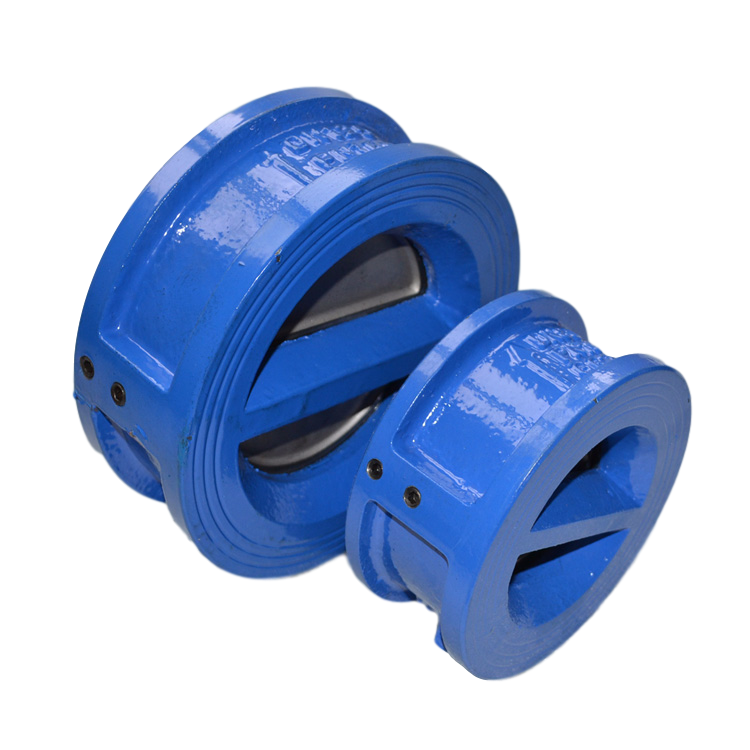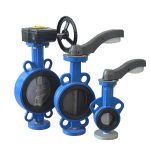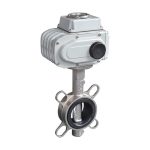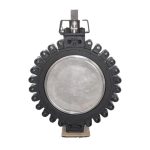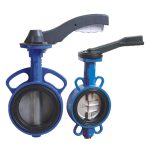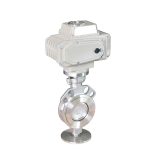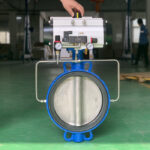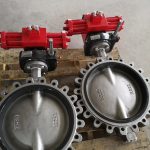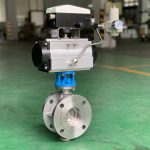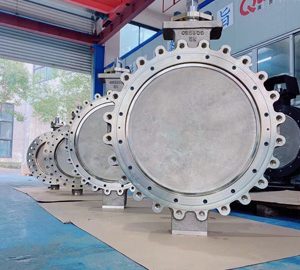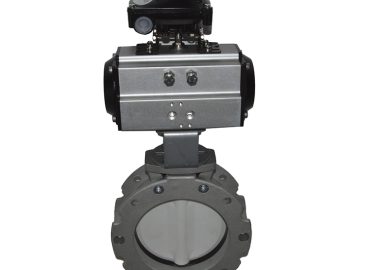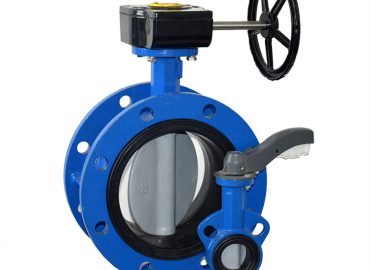In the world of fluid control, valves play a crucial role in regulating flow and ensuring smooth operations across a range of industries. Among the many types of valves in existence, one that stands out for its unique features and versatility is the wafer type non-return valve. This comprehensive guide is designed to shed light on this essential piece of equipment. From its structure and functionality to its advantages and how to choose, install, and maintain one, we’ll delve into all aspects of the wafer type non-return valve. Whether you’re an industry professional or simply interested in learning more about industrial components, this guide will equip you with the knowledge you need.
Introduction
Wafer type non-return valves, also known as check valves, are integral components in fluid control systems across a multitude of industries, from oil and gas to chemical processing, water treatment, and beyond. These specialized valves are designed to allow fluid to flow in one direction only, effectively preventing backflow and potential damage to equipment or disruption of processes. As the name suggests, wafer type non-return valves are characterized by their thin, wafer-like design, which makes them compact and easy to install between flanges in a piping system. Their streamlined structure, combined with a responsive disc mechanism that closes swiftly when flow reverses, ensures efficient operation with minimal pressure loss. The selection of a wafer type non-return valve depends on several factors, including the nature of the fluid, pressure and temperature conditions, and specific system requirements. Installation should be carried out carefully, observing the correct orientation to ensure optimal performance. Regular maintenance, typically involving inspection of the disc and seating area for wear or damage, is also crucial to prolong the valve’s lifespan and maintain system integrity. With their unique blend of simplicity, efficiency, and versatility, wafer type non-return valves offer a reliable solution for one-way flow control in various industrial applications.
Brief explanation of what a non-return valve is.
A non-return valve, also known as a check valve, is a mechanical device that allows fluid (liquid or gas) to flow in one direction only. These valves are designed with an internal mechanism – usually a ball or flap – that opens to allow flow under pressure in one direction, but closes when the pressure reverses, effectively preventing backflow. Non-return valves are crucial components in many types of piping systems, where they ensure that the fluid doesn’t flow backwards and cause damage or disrupt operations. They are commonly used in a wide variety of applications, ranging from domestic water systems to industrial processes and even in certain medical devices. The main purpose of a non-return valve is to secure the system, maintain consistent operation, and protect the integrity of the fluid or gas being conveyed.
Explanation of the importance of non-return valves in various industries.
Non-return valves play a significant role in a myriad of industries due to their ability to prevent backflow and maintain consistent operational efficiency. In the oil and gas industry, these valves are essential for safeguarding expensive equipment and ensuring smooth pipeline operations by allowing fluid to flow in only one direction. They are equally important in the chemical industry, where they prevent potentially hazardous substances from flowing back into the system, thus minimizing the risk of accidents or damage. The water treatment sector relies on non-return valves to maintain the integrity of clean water supplies by preventing contamination from reverse flow. Similarly, in the food and beverage industry, these valves help maintain hygiene standards by stopping any potential backflow of product or cleaning fluids. In power generation plants, non-return valves are crucial in steam and cooling systems to ensure safe and efficient operation. Essentially, wherever there’s a need to control the direction of fluid flow, non-return valves are indispensable tools for enhancing system performance and safety.
Introduction to the wafer type non-return valve and its unique features.
The wafer type non-return valve, often referred to as a check valve, is a specialized device designed to allow fluid flow in one direction and prevent backflow. What sets this valve apart is its unique wafer-like design, boasting a slim and compact structure that makes it easy to install in tight spaces between flanges in a piping system. Unlike other types of valves, the wafer type non-return valve doesn’t require bolting to pipe flanges, which contributes to its streamlined installation process. The valve operates through a disc mechanism that opens when fluid pressure is applied in the correct direction and swiftly closes when the pressure reverses, efficiently preventing backflow. This swift and automatic operation is a standout feature of the wafer type non-return valve, ensuring minimal pressure loss and optimum system performance. Its versatility and efficiency make it an ideal choice for various applications across numerous industries, including water treatment, oil and gas, chemical processing, and more.
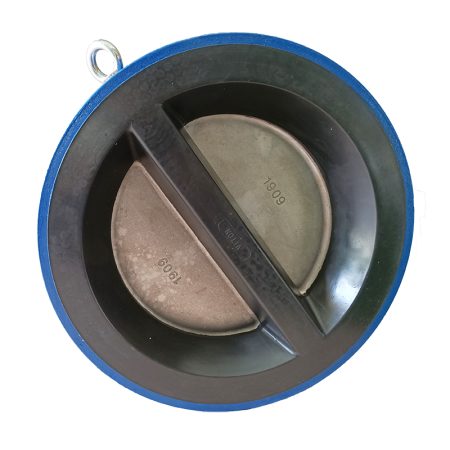
An In-depth Look at the Wafer Type Non-Return Valve
The wafer type non-return valve, also known as a wafer check valve, is a unique and highly efficient type of check valve designed for systems that require backflow prevention. Characterized by its slim, wafer-like design, this type of valve is valued for its compactness and ease of installation. Unlike other types of valves, the wafer type non-return valve is installed between pipe flanges, eliminating the need for extensive bolting and making it an ideal choice for systems with limited space.
The mechanism of a wafer type non-return valve involves a disc or a swing which moves to allow fluid flow in the correct direction under pressure. When the pressure reverses or drops, the disc or swing quickly shuts, preventing any backflow. This swift automatic operation minimizes the potential for pressure loss, ensuring optimal system performance. The speed at which these valves operate also reduces the risk of water hammer, a common issue in many piping systems.
One of the standout features of wafer type non-return valves is their versatility. They can handle a wide range of pressures and temperatures, and they are compatible with various types of fluids, including gases, making them suitable for use in a broad array of industries. From the oil and gas sector, where they protect expensive equipment and maintain smooth pipeline operations, to the chemical industry, where they prevent hazardous substances from flowing back into the system, the importance of these valves cannot be overstated.
Moreover, wafer type non-return valves are available in a variety of materials, including stainless steel, cast iron, and PVC, allowing them to be tailored to specific operational environments and fluid characteristics. Some models even offer additional features, such as spring assistance for quicker closing or elastomer seals for enhanced sealing capabilities.
In conclusion, the wafer type non-return valve is a compact, efficient, and versatile solution for preventing backflow in piping systems. Its unique features and wide range of applications make it a critical component in ensuring the safety and efficiency of operations in various industries.
Detailed description of the wafer type non-return valve.
The wafer type non-return valve, commonly referred to as a marine wafer check valve, is a critical component in fluid control systems that require a compact, reliable solution for preventing backflow. Its design is characterized by a thin, wafer-like profile, which allows it to fit snugly between two pipe flanges. This slim build not only saves space but also simplifies installation, as the valve uses the flanges’ bolt holes for secure positioning without needing extensive bolting.
The operational mechanism of a wafer type non-return valve involves a disc or swing that moves in response to fluid pressure. When fluid flows in the intended direction, it pushes the disc open, allowing passage. However, if the fluid tries to reverse direction, the change in pressure causes the disc to swiftly close, effectively preventing backflow. This automatic operation minimizes pressure loss and ensures efficient system performance.
Beyond its core function, the wafer type non-return valve is appreciated for its versatility. It can accommodate a wide range of pressures and temperatures, and it’s compatible with various fluid types, including gases. This adaptability, coupled with the availability of different materials such as stainless steel, cast iron, and PVC, makes the wafer type non-return valve a favored choice across multiple industries – from oil and gas to chemical processing and water treatment. Some models even offer additional features like spring-assisted closing for faster response or elastomer seals for improved sealing capabilities, further enhancing their effectiveness and utility.
Discuss the materials used to make wafer type non-return valves and their significance.
Wafer check valve are manufactured from a variety of materials, each offering specific benefits that make them suitable for different applications and environments. The most commonly used materials include stainless steel, cast iron, bronze, and various types of plastic such as PVC.
Stainless steel is a popular choice due to its high strength, corrosion resistance, and longevity, making it ideal for use in harsh environments and high-pressure systems. Cast iron, on the other hand, offers great durability and cost-effectiveness, although it’s more susceptible to corrosion compared to stainless steel. It’s commonly used in low-pressure systems where corrosion is not a significant concern.
Bronze is another material often used in the manufacture of wafer type non-return valves. It offers good resistance to corrosion and wear, making it suitable for use in water supply systems and other applications involving non-aggressive fluids.
Plastic varieties like PVC are lightweight, corrosion-resistant, and cost-effective, making them an excellent choice for applications involving water, certain chemicals, and other non-aggressive fluids. However, they may not be suitable for high-temperature or high-pressure applications.
The choice of material depends largely on the specific requirements of the system where the valve will be installed. Factors such as fluid type, pressure, temperature, and environmental conditions all play a role in determining the most appropriate material for a given application.
Advantages of Using Wafer Type Non-Return Valves
Wafer type non-return valves offer numerous advantages that make them a preferred choice for many applications. One of the primary benefits is their compact design, which allows for easy installation even in tight spaces, as well as cost-effectiveness due to fewer materials used in their construction. These valves are designed to be slim and are unlikely to clog, making them ideal for use with materials containing solid particles.
Additionally, wafer-type non-return valves operate autonomously without the need for a handwheel or valve actuator, further simplifying their use. They also have a quick response time, which is crucial in preventing backflow and maintaining the efficiency of the system.
Non-return valves, including the wafer type, reduce the possibility of sudden valve failure and lower maintenance costs due to fewer moving parts. This feature can significantly increase the lifespan of your system and decrease downtime.
Furthermore, they help in preventing materials from flowing back upstream of the valve, ensuring the right direction of fluid flow. Turbulence and pressure drop are very low in these valves, and they have replaceable seat rings and an angled seating surface that permits easier opening at lower pressures.
Lastly, wafer check valves are in-line piping valves used to control fluid flow direction and reduce or fully prevent possible backflow within plumbing systems. These features make wafer type non-return valves a versatile and reliable option for a variety of applications.
Discuss the benefits of using wafer type non-return valves over other types of valves.
Wafer type non-return valves offer several benefits over other types of valves, making them a preferred choice for many applications. One of the main advantages is their compact and lightweight design which allows for easy installation in tight spaces and systems where weight is a critical factor. Unlike ball valves or gate valves, wafer type non-return valves do not require significant space or support structures, making them ideal for compact piping systems.
In addition to their size advantage, these valves operate automatically, eliminating the need for manual operation or complex actuation systems. This autonomous operation is particularly beneficial in preventing backflow in fluid systems, as the valve responds immediately to changes in flow direction.
Another key benefit of wafer type non-return valves is their low pressure drop. Due to their design, these valves create less turbulence and resistance to flow compared to other types of valves, thereby maintaining the efficiency of the system.
Finally, wafer type non-return valves tend to be more cost-effective than other types of valves. Their simple design and construction require fewer materials, which contributes to lower manufacturing costs. Furthermore, due to their reliability and lower maintenance requirements, these valves can also contribute to reduced operational costs over time.
Real-world examples of situations where wafer type non-return valves are particularly useful.
Wafer-type non-return valves find extensive application in various real-world situations due to their unique features. For instance, in the oil and gas industry, these valves are used in pipelines to prevent the backflow of fluids, ensuring smooth and efficient operation. They are particularly useful in high-pressure environments where a quick response to changes in flow direction is critical.
In water treatment plants, wafer-type non-return valves play a crucial role in maintaining the direction of water flow during the treatment process. Their compact design and automatic operation make them ideal for use in these often space-limited facilities.
In HVAC systems, these valves are used to control the flow of refrigerant, preventing it from flowing back into the compressor and potentially causing damage. Their lightweight and easy-to-install nature make them a preferred choice for such applications.
In the food and beverage industry, wafer type non-return valves are used in processing equipment to ensure hygiene standards by preventing the backward flow of products. Their ease of cleaning and maintenance make them particularly suitable for this industry.
In fire protection systems, these valves are used to prevent the backflow of water from fire sprinkler systems into the public water supply, thus protecting it from potential contamination. Their reliability and automatic operation make them an essential component in such safety-critical applications.
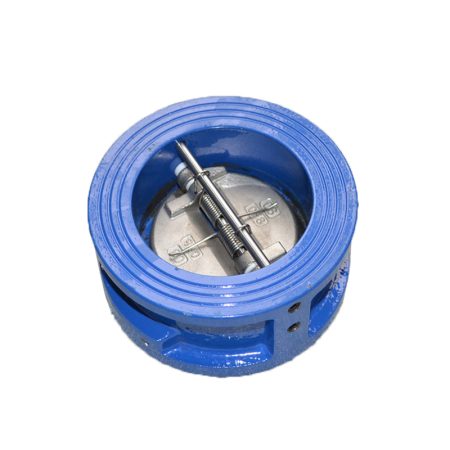
Choosing the Right Wafer Type Non-Return Valve
Choosing the right wafer type non-return valve is a crucial decision that can significantly impact the efficiency and safety of your system. Not all check valves are suitable for every application, and different selection criteria may weigh more heavily depending on the specific use case.
The selection process should consider several factors including hydraulic characteristics, closing speeds, and available options for each specific application. It’s also important to have a knowledgeable team that can provide technical guidance and after-sales support, ensuring the chosen valve meets your needs.
Wafer type non-return valves offer numerous advantages such as compact design, cost-effectiveness, easy installation, low-pressure drop, versatility, and quick response time. However, it’s crucial to ensure these benefits align with your specific requirements.
For instance, in applications dealing with oil, stainless steel wafer swing type check valves might be suitable due to their compatibility with this type of fluid.
When considering the best non-return valve, understanding how it works, the appropriate materials, suitable applications, and the pros and cons of each type is essentia.
Design and selection of check valves should also take into account factors such as cost and fluid compatibility. Finally, in situations where space is a constraint, wafer check valves’ design allows them to be fitted in extremely tight spaces, offering a practical solution.
Factors to consider when choosing a wafer type non-return valve, such as pressure rating, size, and material.
When selecting a wafer type non-return valve, several factors must be taken into consideration to ensure optimal performance and longevity. One of the most critical factors is the pressure rating of the valve. The valve should be able to withstand the maximum pressure of your system without failure. Exceeding the valve’s pressure rating could result in leakage or even catastrophic failure.
The size of the valve is another important consideration. The valve should fit perfectly within your piping system to prevent leaks and maintain efficient fluid flow. It’s crucial to measure the internal diameter of your pipes accurately before making a selection.
The material of the valve is also a significant factor to consider. Depending on the type of fluid being controlled, you might need a valve made from a specific material. For example, if your system handles corrosive fluids, you might need a valve made from a corrosion-resistant material like stainless steel or PVC.
Lastly, other factors such as the temperature rating, flow rate, and the valve’s response time should also be considered. The valve should be able to operate effectively within the temperature range of your system. The flow rate should match your system’s requirements, and the valve should respond quickly enough to prevent backflow effectively. All these factors combined will help you choose the right wafer type non-return valve for your specific needs.
Tips on how to choose the right supplier or manufacturer.
Choosing the right supplier or manufacturer is a critical step in ensuring the quality and reliability of your products or services. Here are some tips to guide your decision-making process. First, consider the reputation of the supplier or manufacturer. Research their track record, customer reviews, and industry feedback to assess their credibility and reliability. Second, evaluate their product quality. Request samples or conduct site visits if possible, to inspect their manufacturing processes and quality control measures firsthand.
Third, assess their customer service. A good supplier or manufacturer should have excellent customer support, responding quickly to inquiries and resolving issues promptly. Fourth, consider their pricing structure. While cost shouldn’t be the sole determining factor, it’s important to ensure their pricing aligns with your budget without compromising on quality. Fifth, check their delivery and logistics capabilities. They should be able to deliver products on time and handle logistics efficiently to avoid disruptions in your operations.
Lastly, consider their capacity and scalability. The supplier or manufacturer should be able to meet your current demands and scale up as your business grows. By considering these factors, you can choose a supplier or manufacturer that not only meets your immediate needs but also supports your long-term business goals.
Installation and Maintenance of Wafer Type Non-Return Valves
Installation and maintenance of wafer type non-return valves are critical aspects that significantly impact the performance and longevity of these valves. For successful installation, it’s essential to ensure that the valve is installed in a manner that provides adequate means for draining and venting to avoid potentially harmful effects such as water hammer, vacuum collapse, and corrosion. According to Valsteam, wafer type valves should be installed between flanges, and they can be installed in any position based on the conditions stated in their catalogue.
Adequate space is also crucial for proper installation and operation, which helps optimize performance (source: POV Butterfly Valve). If the valve is not required to be installed immediately, it should be stored indoors in a clean and dry environment.
As for maintenance, some valves, like the RM non-return valve, require practically no maintenance if properly installed, but it’s advisable to check their operation regularly. Some manufacturers, like FlowBiz Export Pvt LTD, emphasize the ease of maintenance for their wafer type non-return check valves.
Lastly, the economical aspect of these valves is also noteworthy. They are cost-effective not just in terms of the initial investment but also in terms of installation and maintenance, making them an ideal choice for cost savings.
Step-by-step guide on how to install a wafer type non-return valve.
Installing a wafer type non-return valve involves several steps that must be followed to ensure optimal performance and safety.
- Preparation: Start by ensuring that the pipeline where you intend to install the valve is clean and free of debris. This is crucial because any contamination can compromise the valve’s function. Also, make sure that the valve matches the size of the pipe.
- Positioning: Position the valve between the two flanges of the piping system. The valve’s orientation should be such that the flow direction arrow on the valve body corresponds with the flow direction in the system.
- Alignment: Align the bolt holes of the valve with the bolt holes of the flanges. The valve should fit snugly and evenly between the flanges without requiring force.
- Securing: Insert the bolts through the aligned holes and fasten them to secure the valve in place. Be careful not to over-tighten, as this could damage the valve or the flange.
- Testing: Once the valve is installed, slowly introduce pressure into the system and check for leaks around the valve. If any leaks are detected, shut off the pressure, address the issue, and retest.
- Documentation: Finally, document the installation details, such as the date, valve type, and any observations made during the process. This information will be useful for future reference and maintenance.
Remember, safety should be your top priority throughout the installation process. Always follow the manufacturer’s guidelines and use appropriate personal protective equipment. If you’re unsure about any aspect of the installation, consider seeking professional assistance.
Best practices for maintaining and inspecting wafer type non-return valves to ensure their longevity and optimal performance.
Maintaining and inspecting wafer type non-return valves is crucial to ensure their longevity and optimal performance. Three main methods are commonly used for inspecting these valves: external inspection, visual inspection, and functional testing.
External inspections involve evaluating the valve’s physical condition, looking for signs of damage or wear that could affect its performance. This includes checking for corrosion, leaks, or any abnormalities in the valve’s exterior. In contrast, visual inspections focus on the internal components of the valve. This involves disassembling the valve and visually examining its parts for signs of damage, wear, or contamination (source: POV Butterfly Valve).
Functional testing entails running the valve through its operational cycle to ensure it is working as intended. This might involve checking for flow reversal in applications where this situation can occur.
For maintenance, it’s important to keep the valve clean, wiping off dust and dirt regularly. Some types of valves, like balanced-clapper check valves and butterfly check valves, are designed for easier removal, making them easier to maintain.
Lastly, keeping a record of the valve’s inspection, failure, and repair history can help identify patterns and predict potential issues before they occur, ensuring the valve’s longevity and optimal performance.
-450x450.jpg)
Conclusion
In conclusion, wafer type non-return valves play a vital role in numerous industries, helping prevent backflow and ensuring the efficient operation of systems. Understanding these valves, their installation, maintenance, and inspection processes, is crucial for anyone involved in their use or management.
The installation process, although seemingly straightforward, requires careful attention to detail. It’s important to ensure that the valve is installed correctly, with the flow direction matching the arrow on the valve body. The valve should be securely fastened between the flanges of the piping system, and once installed, the system should be tested for leaks to ensure the valve is functioning as expected.
Maintenance and inspection of these valves are equally important. Regular external and internal inspections can help identify potential issues before they become significant problems, helping to prolong the life of the valve and maintain optimal performance. Functional testing is also essential to ensure the valve is operating correctly. Remember, cleanliness is key; keeping the valve clean can prevent many common issues.
However, it’s not just about understanding these processes; it’s also about implementing them consistently. Keeping a record of your valve’s inspection, failure, and repair history can provide valuable insights into its performance over time and help predict potential issues before they occur.
In essence, wafer type non-return valves are more than just a component in a system; they are an investment. By understanding these valves and following best practices for their installation, maintenance, and inspection, you can protect this investment and ensure the longevity and reliability of your system. So, here’s to a deeper understanding of wafer type non-return valves, and to systems that function smoothly for years to come!
Recap of the importance and benefits of understanding and using wafer type non-return valves.
In summary, understanding and using wafer type non-return valves is of paramount importance in many industrial settings. These valves play a crucial role in preventing backflows and maintaining system efficiency. A deep comprehension of their operation allows for proper installation, thereby reducing the risk of malfunctions and potential damage to the system. Regular maintenance and inspection of these valves not only ensure their optimal performance but also significantly extend their lifespan, resulting in cost savings in the long run. Furthermore, proper documentation of the valve’s inspection, failure, and repair history can provide valuable insights for predictive maintenance and preemptive measures. Therefore, the benefits of understanding and using wafer type non-return valves are multifaceted, contributing to system reliability, operational efficiency, and overall cost-effectiveness.


